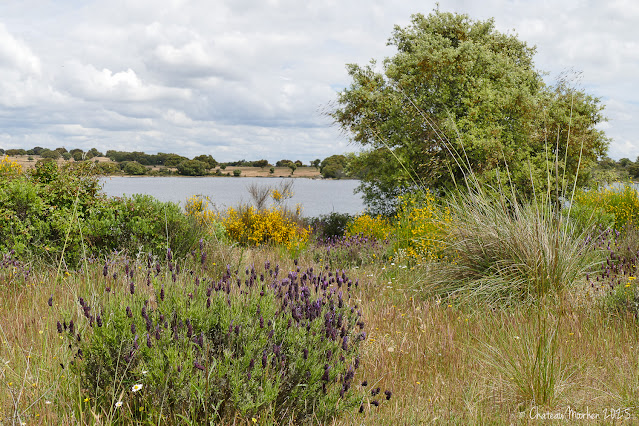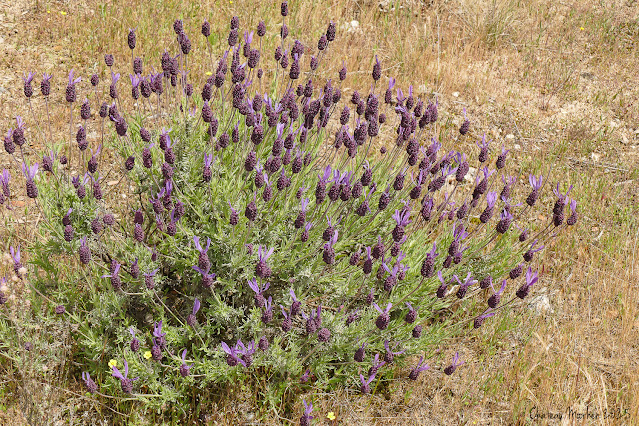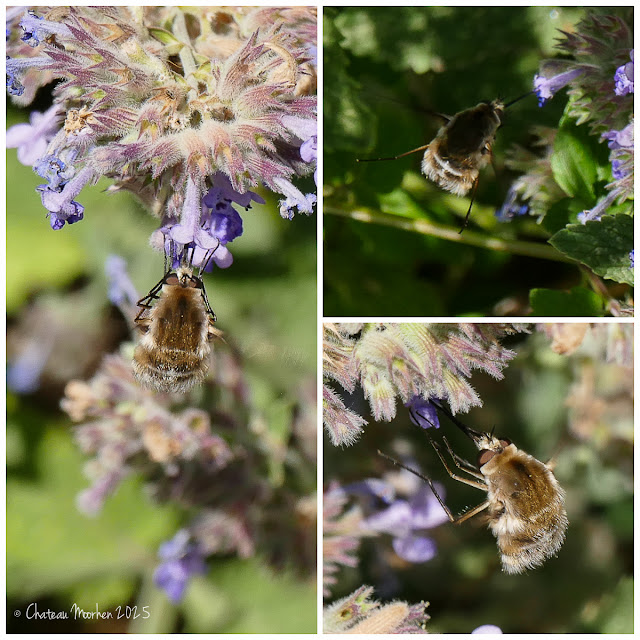We spent the night at a campsite on the Portuguese side of the border (a new country for me!) then the next morning boarded a boat at Miranda do Douro in Portugal for a cruise up the river. This part of the river has high sided cliffs and there is a Natural Park on each side of the river. The cruise was labelled as an eco cruise and we were hoping to see Spanish Imperial Eagles, but yet again, no such luck! We did see a few Griffon Vultures flying overhead.
In this part of Spain and Portugal the broom was flowering in abundance - possibly Spanish Broom but I don't really know as there are many kinds of broom.
At this point I was taking photos from inside the boat. Our cruise was all in Portuguese (and probably Spanish as well) but we had an idea of what they were talking about as we had read the leaflets in English.
Halfway through the cruise we were allowed out on the viewing decks.
The cliffsides were covered in moss, ferns and lichen.
We spent the afternoon exploring in the Arribes del Duero* Natural Park on the Spanish side and stopped at a reservoir for our lunch. It was a fabulous place to while away some time.
* That's the Spanish spelling of the river, the other is the Portuguese!
There was nobody else here and it would have made a great spot to wild camp, though with my brother's tent and a husband who doesn't fit inside the shower of the Moho, we went to a campsite.
There were wildflowers galore, including this small Spotted Rockrose (Tuberaria guttata).
Standing out the most with the yellow Broom was the French Lavender (Lavandula stoechas), which was growing wild everywhere, all the way down to about halfway through Extremadura region to the south. We have some in the mountains around where we live but only in patches with acid soil - the chalk soil has normal lavender.
Later on we took a walk to a waterfall on a tributary of the Douro which I had read about, which had a platform hanging out over the cliff to view the falls. On the way my brother spotted this butterfly, which is a Spanish Festoon (Zerynthia rumina). It's sadly very worn as there should be red spots amongst the black and cream markings! I've seen one flying away before but never really seen one properly, so this is sort of a lifer.
After a little while walking downhill on a very rough rocky path, I caught a glimpse of the river down below. I mean, really down below. I had no idea it would be that far down!
Then looking through my binocs I could see that this was the place we were aiming for, with the viewing platform. I knew that there was no way I could get down that far on the rough path, never mind getting back up again! I have been suffering from a dodgy hip whenever doing stairs or uphill slopes, not to mention my weak knees. I know now when to call it a day. I don't think the guys were too sorry either to give this hike a miss! 😁















































